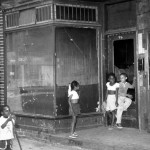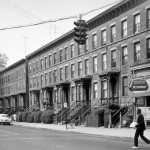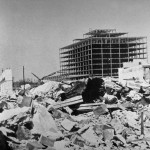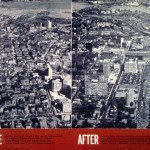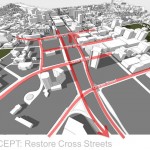The city of New Haven is trying to make up for one of the biggest mistakes to come out of the era of its own heralded program of urban renewal: partial construction of the Oak Street Connector, intended to bring automobile traffic from the newly completed Connecticut Turnpike into the city’s downtown and to towns beyond. The route was never completed, a victim of protests from residents who objected strenuously to the further loss of viable housing and commercial structures to the proposed throughway. What did transpire was a utilitarian roadway that nonetheless cut the Yale medical, nursing, and public health schools off from the downtown and required the displacement of 880 households—mostly in the predominately black Hill residential area—and the loss of 350 businesses. After his death, the connector, which was otherwise referred to as “the highway to nowhere” was named for Richard C. Lee, the longtime orchestrator of renewal as New Haven’s Democratic mayor.
I experienced the visceral reaction to renewal and the Oak Street Connector directly when I was a graduate student at Yale. At my instigation, a local Republican advisory committee offered a forum on housing in a school located in the path of the connector and slated for demolition. We were represented by a staff member from Senator Charles Percy’s office that night. His role was to speak about Percy’s support for expanding home ownership. The crowd which jammed the meeting room that hot summer night was in no mood to discuss how they might gain access to home ownership. They were angry about displacement that was accompanying the city’s ambitious redevelopment plans. The Republican candidate for mayor attended the session, and although he made something of a fool of himself by not connecting with his audience, the anger was so great, one of the Hill residents who accompanied me back downtown after the meeting said he would vote for the GOP candidate if he only were not barred from doing so because of a past felony. Critics charged that the Hill area was not the slum the redevelopment agency depicted, but a vital area containing a good deal of viable housing stock as well as active businesses., many of which were bulldozed to make way for the highway (as shown below).
Months later the city was engulfed by days of civil disorder. An open letter addressed to Mayor Lee in the aftermath of the August, 1967 riots charged the redevelopment agency with perpetuating violence daily on local residents and naming the Oak Street Connector as a primary agent for blotting out an entire neighborhood. “The Redevelopment Agency is an invading army. The recent rampage was only a desperate attempt by those with no economic or political power—of whom Negroes are the most desperate—to demonstrate their plight,” the circular proclaimed.
The controversy generated for new plans to modify the connector may seem modest in comparison, but it nonetheless suggests the distance planning still has to go in the city. Utilizing a $16 million Tiger II Department of Transportation grant, the primary vision behind Downtown Crossing is a series of cross streets intended to make the area east of the downtown more accessible by connecting it back to the city’s existing grid. It would also create 10 acres of new, developable space, intended to host restaurants, shops, and parks. Like the original plans for the connector, this initiative is being advanced in the name of boosting the city’s tax base, a goal that has been initially confirmed with a commitment by Alexion Pharmaceuticals, which left the city for the suburbs in 2000, to occupy a new 11-story $100 million building at the edge of the proposed redevelopment. The company is to receive up to $51 million in state subsidies to make the move.
A number of critics have charged that the plan does not go far enough in restoring pedestrian amenities in place of an existing highway. While access to the Yale facilities will no doubt be easier, and new ventures should follow this investment, there is no mention at all in the plan about the possibilities of enhancing residential life in the area to the east. It’s almost as though the Hill and its residents have been consigned to a forgotten history.
